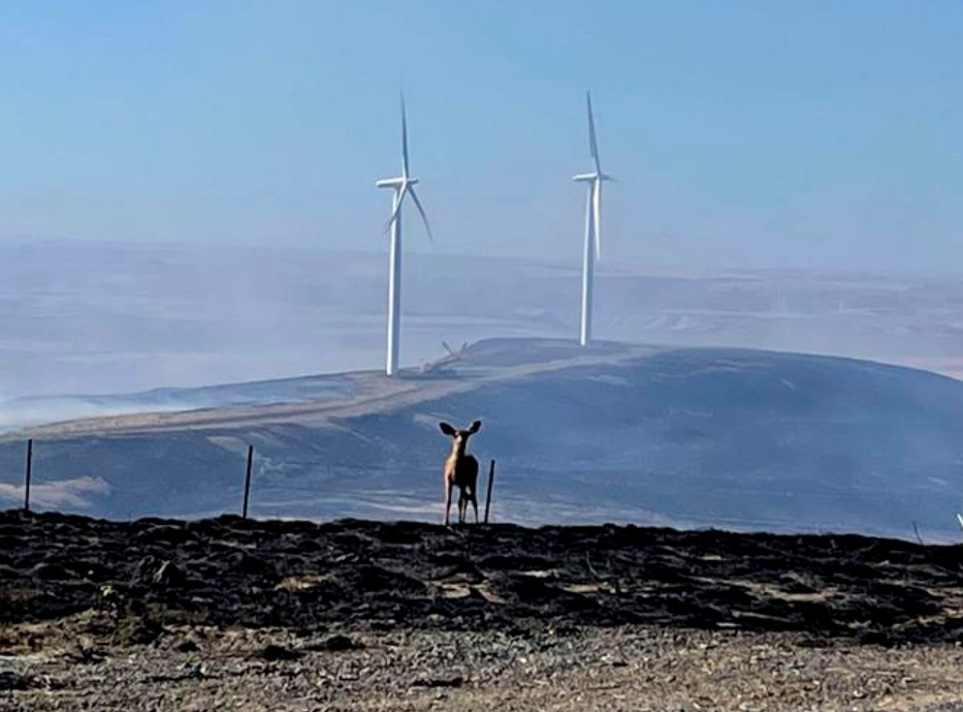
A wildfire that started in Klickitat County, Washington, on Friday afternoon destroyed more than 30,000 acres in less than a day and continues to grow as it feeds on brush, grass, and forest vegetation.
Fire crews are working to extinguish the Newell Road Wildfire near Bickleton, which has resulted in the evacuation of residents in the rural area, and is threatening farms, livestock, homes, and wind and solar farms, reported KOMO News.
“It’s very difficult terrain to fight fire,” said Allen Lebovitz, a spokesperson for the state’s Department of Natural Resources, as Reuters reported. “We are under a red flag warning. That’s a firefighter’s worst nightmare because the humidity is dropping precipitously. The winds are picking up. And so the fire carries extremely fast.”
The wildfire is burning just to the north of where the Oregon-Washington border is represented by the Columbia River. It has destroyed several structures and is threatening a natural gas pipeline.
Lebovitz said the fire was heading in the direction of the Yakama Indian Reservation.
Officials haven’t announced what caused the fire, and there have been no injuries or deaths reported.
“The climate change problem, the fuse has been burning for decades, and now the climate change bomb has gone off. The scientists are telling us that this is the new age,” Washington Governor Jay Inslee said yesterday, according to The Independent.
According to the National Interagency Fire Center, there are currently 36 large fires burning throughout the country, including eight new large fires as of yesterday in Arizona, Oregon, Idaho, and Wyoming.
“Since January, 28,470 wildfires have burned 847,349 acres across the United States, still below the 10-year average of 32,686 wildfires and 3,393,317 acres burned,” the National Interagency Fire Center website said.
Fire officials warned the public against using drones to get a look at wildfires, the fire center said.
“Unauthorized drone flights pose serious risks to firefighter and public safety operations and the effectiveness of wildfire suppression efforts. When your drone is in the air near a wildfire, our aircraft must be grounded, putting the lives of firefighters at risk and can cause wildfires to become larger and more costly,” the fire center website said.
According to the National Oceanic and Atmospheric Administration, climate change is making wildfire seasons more intense.
“I don’t think the U.S. has enough firefighters for these fires, and Canada most certainly does not,” said Daniel Perrakis, a fire research scientist with the Canadian Forest Service in British Columbia, as reported by NPR. “Climate change is very significant. We’ve got drought levels that are… at least in the extreme category, and the fire season’s [arriving] early.”
This article was reposted from EcoWatch.
We hope you appreciated this article. At People’s World, we believe news and information should be free and accessible to all, but we need your help. Our journalism is free of corporate influence and paywalls because we are totally reader-supported. Only you, our readers and supporters, make this possible. If you enjoy reading People’s World and the stories we bring you, please support our work by donating or becoming a monthly sustainer today. Thank you!












Comments